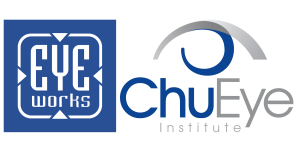How are Cataracts developed? Who is at risk for Cataracts?
Cataracts can develop from normal aging, from an eye injury, or if you have taken medications known as steroids. Older people are generally more at risk of developing cataracts than younger people. Approximately 60% of people ages 60 and older have their vision significantly affected by cataract formation. For people over age 55, cataracts are the leading cause of reversible vision loss. Diabetes, heredity, eye trauma, and certain medications can accelerate cataract development, and there is some evidence that smoking can also accelerate cataract development.
Is removing the Cataract surgically my only treatment option? Can I elect not to have surgery?
Yes, surgery is the only way to remove a cataract. You can decide not to have the cataract removed, however, if you don’t have the surgery, your vision loss from the cataract will continue to worsen.
How will removing a Cataract effect my vision?
The goal of cataract surgery is to correct the decreased vision that was caused by the cataract. During the surgery, Dr. Chu will remove the cataract and implant a new artificial lens called an intraocular lens (IOL). Cataract surgery will not correct other causes of decreased vision, such as glaucoma, diabetes, or age-related macular degeneration. Many people still need to wear glasses or contact lens after cataract surgery for either near and/or distance vision and astigmatism. An advanced technology presbyopia-correcting IOL can be implanted allowing more range of vision and spectacle independence.
Why use a lens implant?
When we perform a cataract surgery, the ultrasound dissolves and removes is the natural lens of the eye containing the cataract. Therefore, we use a special intraocular lens (lens implant) to replace the natural lens that was removed. This lens implant is inert to your body and should not need to be replaced.
What types of IOLs (Inter Ocular Lenses) are available to me?
Dr. Richard Chu will help you decide on the type of IOL that will replace your cloudy lens. There are IOLs available to treat nearsightedness (myopia), farsightedness (hyperopia), and astigmatism. IOLs usually provide either near or distance vision: these single focus lenses are called monofocal IOLs. Some advanced IOLs can provide for near, intermediate, and distance vision: these multiple focus lenses are called presbyopia-correcting or technologically advanced IOLs. IOLs that treat astigmatism are called toric IOLs.
Is the lens implant permanent? Will I feel a difference with the lens implant?
The lens is intended to be permanent and in most cases will not need to be removed.No, the lens becomes a part of you. It is as natural in appearance, comfort and durability as your natural lens had been prior to the development of the cataract.
Will injections or stitches be needed?
The eye is desensitized without injections. We use anesthetic drops to numb the eyes. This eliminates the pain and bruising of the eye associated with injections. Because the incision is so small, it usually does not require stitches.
Will I be put to sleep for surgery?
A qualified anesthesiologist or nurse anesthetist will administer a local anesthesia to keep you relaxed but awake. Most cataract surgeries take approximately 15 to 30 minutes.
Can both eyes be done on the same day?
No. Only one eye is operated on at a time. The second eye can be treated approximately two weeks later.
What is Astigmatism? Are there other treatments for it?
Patients with nearsightedness and farsightedness often also have astigmatism. An astigmatism is caused by an irregularly shaped cornea; instead of being round like a basketball, the cornea is shaped like a football. This can make your vision blurry. In addition to toric IOLs, astigmatism can be corrected by glasses, contact lenses, and refractive surgery (LASIK or PRK). There is also a procedure called a limbal relaxing incision (LRI), which can be done at the same time as the cataract operation, or as a separate procedure. A limbal relaxing incision (LRI) is a small cut or incision the ophthalmologist makes into your cornea to make its shape rounder. Any attempt at astigmatism reduction could result in over- or under-correction, in which case glasses, contact lenses, or another procedure may be needed.
What are possible side effects of cataract surgery?
As with any surgery, pain, infection, swelling and bleeding are possible. Very few patients have serious problems or cataract surgery complications. Dr. Chu may prescribe medications for these effects. Retinal detachment also occurs in some people. Be on the lookout for excessive pain, vision loss, or nausea, and report these symptoms to us immediately.
What happens after surgery?
Recovery time after cataract surgery is usually about four weeks. Immediately following surgery, the patient may experience some pain and irritation of the eye. Due to strong dilation, you may experience increased light sensitivity and a small amount of fluid discharge. Tylenol or Advil are preferred for pain or headaches and over the counter, moistening drops such as Systane or Optive for irritation. Follow-up exams allow the physician to monitor patient progress. Eye shields must be worn for the first week to protect the eye while sleeping. Restrictions include no lifting ANYTHING over 20 LBS, no bending at the waist, and no eye make-up for 1 week. NO SWIMMING for 2-4 weeks.
When will I be able to return to work?
Most patients can return to normal activities including driving, work within a few days. However, some patients may take longer to achieve their final visual clarity. This is at your level of comfort.
Will a cataract ever come back?
No, a cataract will never return once it is removed. However, sometimes a cloudy membrane forms in the capsule or “sack” behind the lens implant. Fortunately, that is able to be removed with a simple laser treatment. This clouding has been known as a “secondary cataract” and may form weeks to years after cataract surgery.







